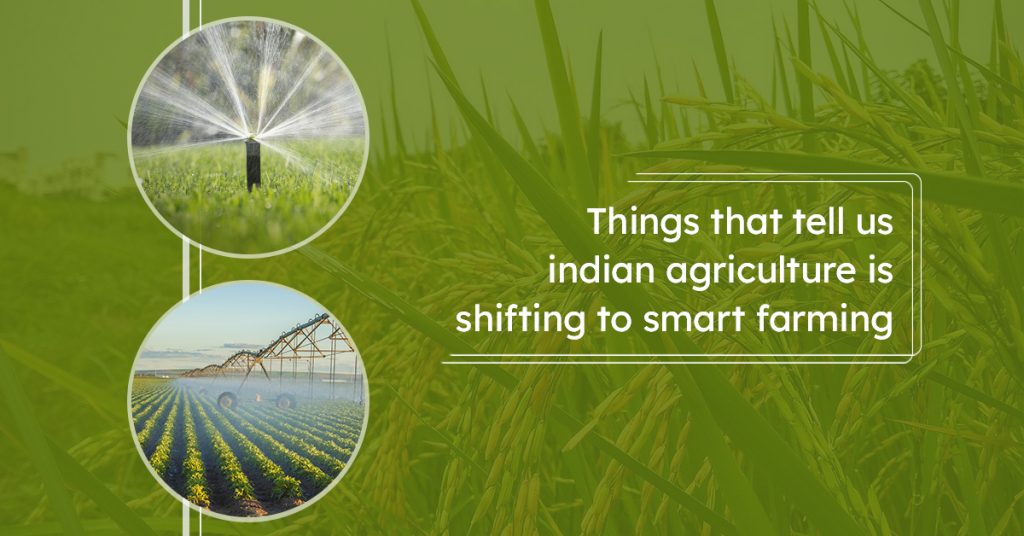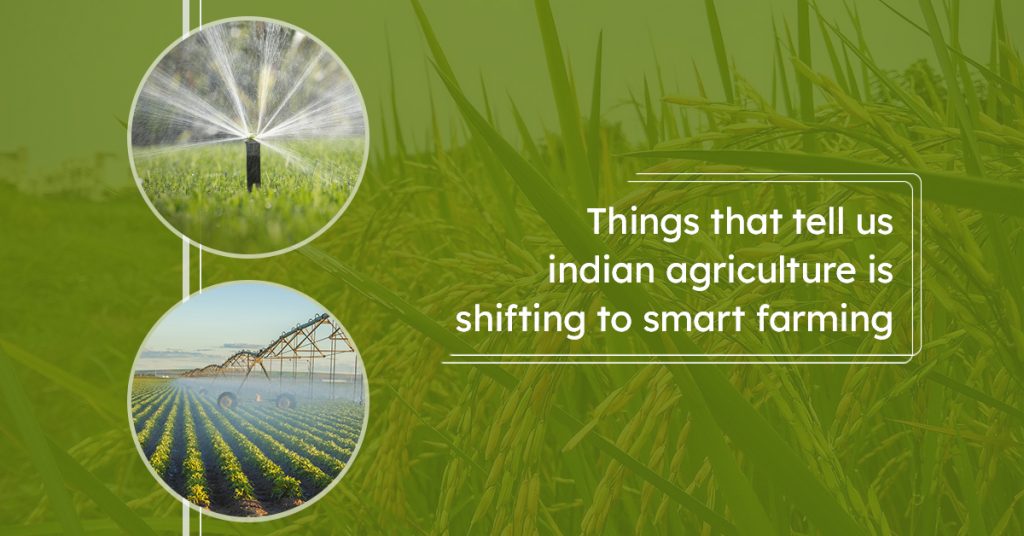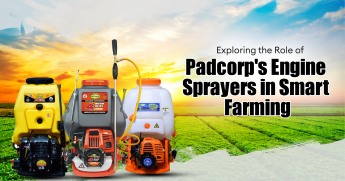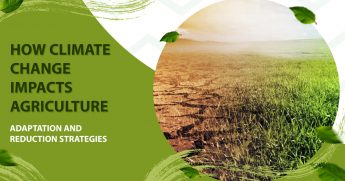
Globally, India is the largest producer of food grains and agriculture plays an influential role in the economy and development of a country.
The enormous pressure on the agricultural fields to give high yield can be solved by intervention of technology in the agriculture sector. Due to various benefits of smart farming, farmers in India are adapting these equipment and technology to upscale their produce.
What is smart farming?
Smart farming also known as precision farming is a method of farming which utilises modern technology to its benefits by increasing the quantity and quality of the yield. It reduces waste, develops productivity and enables management of resources.
Indian agricultural sector has adapted various technologies which shows that it is shifting towards smart farming.
Global positioning system (GPS)
GPS is a system for navigation based on network of satellites that helps users to record positional information (latitude, longitude and elevation) with high accuracy. GPS allows farmers to locate the various positions in a field for information, such as soil type, pest occurrence, weed invasion, water holes, boundaries and obstructions. The system allows
farmers to reliably identify field locations so that inputs (seeds, fertilizers, pesticides, herbicides and irrigation water) can be applied to an individual field, based on performance criteria and previous input applications.
Sensor Technology
Various technologies such as electromagnetic conductivity, photo electricity and ultra sound are used to measure humidity, vegetation, temperature, texture, structure, physical character, humidity, nutrient level, vapour, air etc. Remote sensing data are used to distinguish crop species, locate stress conditions, identify pests and weeds and monitor drought soil and plant conditions.
Grid soil sampling and variable-rate fertilizer (VRT) application
Variable-rate technologies (VRT) are automatic and applied to varied farming processes. VRT systems set the rate of delivery of farm inputs depending on the soil type noted in a soil map. Information accessed from the GIS can control processes, such as seeding, fertilizer and pesticide application, herbicide selection and application at a variable rate in the right place at the right time.
Rate controllers
These are devices designed to control the rate of delivery of chemical inputs like fertilizers and pesticides, either liquid or granular. They monitor the speed of tractor/sprayer traveling all over the field, including the flow and pressure of material making output adjustments in real time.
Precision Irrigation systems
Precision irrigation system being released for commercial use in sprinkler irrigation by controlling the irrigation machines motion with GPS based controllers. In addition to motion control, wireless communication and sensor technologies are being developed to monitor soil and ambient conditions, along with operation parameters of the irrigation machines (i.e. flow and pressure) to achieve higher water application efficiency and utilization by the crop.
Software
Applying precision agriculture technologies will frequently require the use of software to carry out diverse tasks such as display-controller interfacing, information layers mapping,
pre and post processing data analysis and interpretation, farm accounting of inputs per field, and many others. The most common are software to generate maps (e.g. yield, soil); software to filtering collected data; software to generate variable rate applications maps (e.g. for fertilizer, lime, chemicals); software to overlay different maps; and software to provide advanced geostatistical features.
Precision farming on arable land
Important application of precision agriculture in arable land is to optimise the use of fertilizers, starting with the three main nutrients Nitrogen, Phosphorus and Potassium. In
conventional farming these fertilizers are applied uniformly over fields at certain times during the year. This leads to over- application in some places and under-application in others. The environmental cost is directly related to over – application which allows nitrogen and phosphorus leaching from the field into ground and surface waters or to other areas of the field where they are not required.
On-line resources for precision agriculture
Online data base has a pool of information on new smart farming technology for higher yield. Most manufacturers of modern farm equipment, GPS receivers, sensors, and other precision agriculture technologies use this media to inform growers on new products, technical specifications, trouble-shooting information, software upgrades, and a variety of service.
Conclusion
Smart farming has been developed and widely adapted by agriculturists of India and the above stated points are a proof of it. Padgilwar corporation has been a major player in agricultural sector and an enormous contributor in providing smart farming solutions to the farmers of India. With their collaboration with government bodies, farmers of large areas are now able to use this technologically advanced equipment. Check our website for more details.



